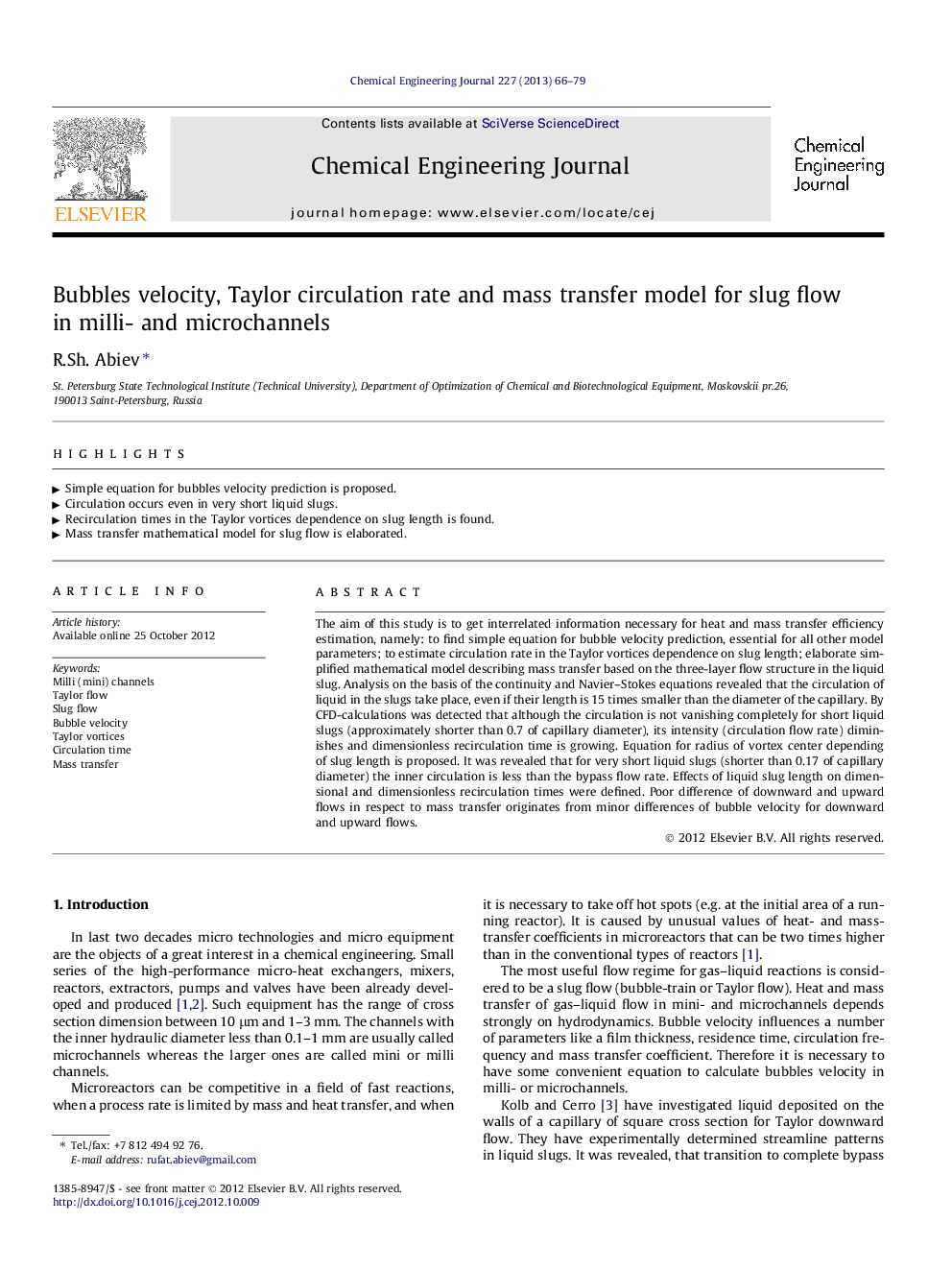| Article ID | Journal | Published Year | Pages | File Type |
|---|---|---|---|---|
| 148522 | Chemical Engineering Journal | 2013 | 14 Pages |
The aim of this study is to get interrelated information necessary for heat and mass transfer efficiency estimation, namely: to find simple equation for bubble velocity prediction, essential for all other model parameters; to estimate circulation rate in the Taylor vortices dependence on slug length; elaborate simplified mathematical model describing mass transfer based on the three-layer flow structure in the liquid slug. Analysis on the basis of the continuity and Navier–Stokes equations revealed that the circulation of liquid in the slugs take place, even if their length is 15 times smaller than the diameter of the capillary. By CFD-calculations was detected that although the circulation is not vanishing completely for short liquid slugs (approximately shorter than 0.7 of capillary diameter), its intensity (circulation flow rate) diminishes and dimensionless recirculation time is growing. Equation for radius of vortex center depending of slug length is proposed. It was revealed that for very short liquid slugs (shorter than 0.17 of capillary diameter) the inner circulation is less than the bypass flow rate. Effects of liquid slug length on dimensional and dimensionless recirculation times were defined. Poor difference of downward and upward flows in respect to mass transfer originates from minor differences of bubble velocity for downward and upward flows.
► Simple equation for bubbles velocity prediction is proposed. ► Circulation occurs even in very short liquid slugs. ► Recirculation times in the Taylor vortices dependence on slug length is found. ► Mass transfer mathematical model for slug flow is elaborated.
